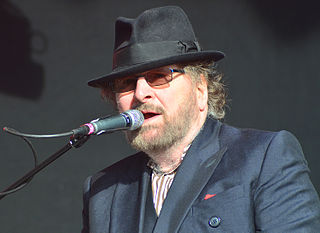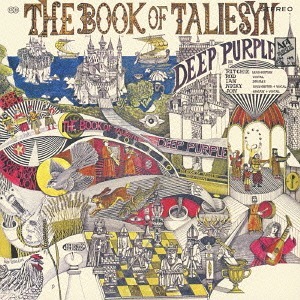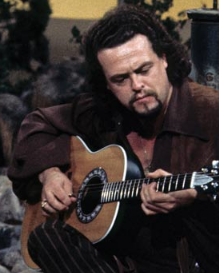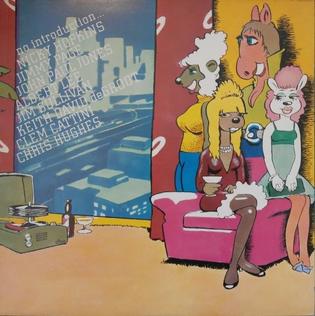
John Douglas Lord was an English orchestral and rock composer, pianist, and Hammond organ player known for his pioneering work in fusing rock with classical or baroque forms, especially with Deep Purple. He also spent time in the bands Whitesnake, Paice Ashton Lord, The Artwoods, The Flower Pot Men and Santa Barbara Machine Head. In 1968, Lord co-founded Deep Purple, a hard rock band of which he was regarded as the leader until 1970. Together with the other members, he collaborated on most of his band's most popular songs. He and drummer Ian Paice were the only continuous presence in the band during the period from 1968 to 1976, and also from when it was reestablished in 1984 until Lord's retirement from Deep Purple in 2002. On 11 November 2010, he was inducted as an Honorary Fellow of Stevenson College in Edinburgh, Scotland. On 15 July 2011, he was awarded an honorary Doctor of Music degree at De Montfort Hall by the University of Leicester. Lord was posthumously inducted into the Rock and Roll Hall of Fame on 8 April 2016 as a member of Deep Purple.

Albert William Lee is an English guitarist known for his fingerstyle and hybrid picking technique. Lee has worked, both in the studio and on tour, with many famous musicians from a wide range of genres. He has also maintained a solo career and is a noted composer and musical director.

Shades of Deep Purple is the debut studio album by the English rock band Deep Purple, released in July 1968 on Tetragrammaton in the United States and in September 1968 on Parlophone in the United Kingdom. The band, initially called Roundabout, was the idea of former Searchers drummer Chris Curtis, who recruited Jon Lord and Ritchie Blackmore before leaving the project. The Mk. I line-up of the band was completed by vocalist/frontman Rod Evans, along with bassist Nick Simper and drummer Ian Paice, in March 1968.

Deep Purple, also referred to as Deep Purple III, is the third studio album by the English rock band Deep Purple, released in June 1969 on Tetragrammaton Records in the United States and only in September 1969 on Harvest Records in the United Kingdom. Its release was preceded by the single "Emmaretta" and by a long tour in the UK, whose dates were interspersed between the album's recording sessions.

Charles Nicholas Hodges was an English musician and singer who was the lead vocalist of the musical duo Chas & Dave.
Screaming Lord Sutch and the Savages were a British rock group from the early 1960s, sporting an ever-changing line-up of musicians and a taste for horror themes and zany humour. The group was founded by drummer Carlo Little, who was a friend of David Sutch, better known as Screaming Lord Sutch.

The Book of Taliesyn is the second studio album by the English rock band Deep Purple, recorded only three months after Shades of Deep Purple and released by Tetragrammaton Records in October 1968, just before their first US tour. The name for the album was taken from the 14th-century Book of Taliesin.

James George Tomkins, known professionally as Big Jim Sullivan, was an English musician whose career started in 1958.
The Outlaws were an English instrumental band that recorded in the early 1960s. One-time members included Chas Hodges,, Bobby Graham, Ritchie Blackmore, Mick Underwood, Reg Hawkins, Billy Kuy, Don Groom, Roger Mingaye, Ken Lundgren and Harvey Hinsley.

Listen, Learn, Read On is a box set released by the British hard rock band Deep Purple in 2002.

Richard Hugh Blackmore is an English guitarist and songwriter. He was one of the founding members of Deep Purple in 1968, playing jam-style hard rock music that mixed guitar riffs and organ sounds. Blackmore is prolific in creating guitar riffs and is often noted for his classically influenced solos.

The Anthology is a compilation album by the British hard rock band Deep Purple, containing material by Mks I (1968-1969), II (1970–73), III (1974–75) and IV (1975–76) line-ups. It was released as a double vinyl album and double-cassette, and included a few previously-unreleased tracks and mixes. The sleeve-notes were written by Chris Charlesworth, author of Deep Purple - The Illustrated Biography.

Michael John Underwood is an English drummer. He first played drums at the age of 14 and was a professional musician by the time he left school.

The Early Years is a 2004 compilation album by the British hard rock band Deep Purple. This is a compilation of material released in 1968 and 1969 and includes unreleased mixes and new mixes of tracks from the same period.

The Mark II Purple Singles is a compilation album by Deep Purple. The album was released in 1979. It claimed to be MkII not just because it was the second line-up of the band but also because it was the second Deep Purple singles album after Singles As & Bs. The tracks were recorded between 1969 and 1972. A version with purple vinyl is also available.

Deep Purple in Rock is the fourth studio album by Deep Purple, released on 5 June 1970. It was the first studio album recorded by the Mark II line-up of Ritchie Blackmore, Ian Gillan, Roger Glover, Jon Lord and Ian Paice.
Live at Montreux 2011 is a live release by English hard rock band Deep Purple's mk VIII lineup credited as Deep Purple with Orchestra, and performed alongside the Neue Philharmonie Frankfurt conducted by Stephen Bentley-Klein. This concert was recorded at the Montreux Jazz Festival on 16 July 2011. Besides a 2CD release, the concert film has also been released on DVD and Blu-ray. All formats were released on 7 November 2011 by German label Eagle Rock Entertainment. In 2015 a vinyl collector's edition of the album was released for a Record Store Day.

BBC Sessions 1968–1970 is a 2011 live compilation album featuring performances by the British hard rock band Deep Purple that were recorded at the BBC's Maida Vale Studios, London, and originally broadcast on various BBC Radio shows from 1968 through 1970. BBC Sessions 1968–1970 is a two-disc set collecting all the surviving sessions in the BBC archives.
Live in Verona is a live release by English hard rock band Deep Purple's mk VIII lineup credited as Deep Purple with Orchestra, and performed alongside the Neue Philharmonie Frankfurt conducted by Stephen Bentley-Klein. This concert was recorded at the Arena di Verona, a Roman amphitheater originally built in 30 AD, on 18 July 2011. Besides a Blu-ray/DVD release, the concert has also been released in Japan on 2CD. Film of the concert was released on 21 October 2014 by German label Eagle Rock Entertainment. The audio album was released on 8 October 2014 by Ward Records.

No Introduction Necessary is a "super session" studio album. Initially it was conceived as debut album by Keith De Groot, a new singer discovered by producer Reg Tracey. It featured Albert Lee and Big Jim Sullivan on guitars, John Paul Jones on bass, Nicky Hopkins on keyboards, Chris Hughes on saxophone and Clem Cattini on drums. The sessions took place at Olympic Studios in London. Nine songs had been completed when neither Lee nor Sullivan were going to be able to take part in next booked session. Tracey called Jimmy Page for the last round of recordings. Page's participation likely took place in either September or December 1967 during breaks from touring with the Yardbirds.

















